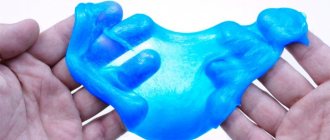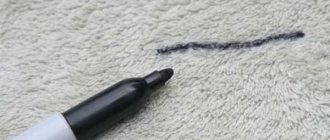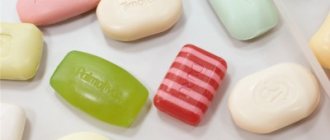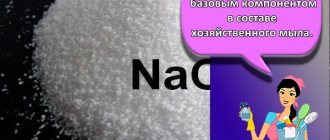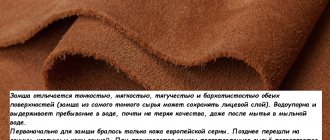Ice in the concept of most people is water frozen at a temperature below 0°C. However, there is a substance that can also take this form, creating dry ice. What it is, what properties it has and where it is used is worth understanding.
What is dry ice?
We are talking about a well-known gas with the chemical formula CO2, which makes up dry ice. It acquires its characteristic solid form due to strong cooling at a temperature of -78.5°C. Its appearance and structure resembles the ice familiar to everyone, which is why it was named that way. However, under normal conditions, when the temperature rises to room temperature, it turns into a gas, bypassing the liquid form. Dry ice is very similar to its water counterpart and has the same color and cooling ability. Moreover, if used incorrectly, it is dangerous to human health.
How is dry ice made?
Special equipment is used for production. Carbon dioxide enters it, where it is cooled, as a result of which it takes on the state of loose snow. This is not the final stage yet. Further, the production of dry ice involves pressing, as a result of which solid cubic-shaped elements are formed. Some craftsmen are trying to recreate this process at home. It must be said that you can make dry ice yourself, but it is a labor-intensive, expensive and dangerous process.
Dry ice - properties
Cooled carbon dioxide acquires a variety of properties, including:
- Density 1561 kg/m³.
- White color.
- The ability to easily turn into steam, remember that dry ice is carbon dioxide.
- The ability to cool nearby objects. The temperature of dry ice is -78.5°C.
Explanation of processes
Dry ice is a very simple substance (solid phase CO₂). It is commercially available and is mainly used for transporting food products or cleaning technical surfaces. But in a home laboratory, dry ice turns into an invaluable reagent! The “highlight” of dry ice is that it immediately changes from a solid state to a gaseous state without an intermediate liquid phase (this process is called sublimation).
The sublimation temperature of carbon dioxide is -78.5°C. When dry ice comes into contact with water, it rapidly changes from a solid to a gaseous state. From the outside it looks like boiling, only with brighter and more characteristic steam formation. Moreover, evaporating carbon dioxide is heavier than air (density 1.9768 kg/m³ versus 1.225 kg/m³), and therefore the “smoke” does not rise, but spreads along the surface around the container with water.
When liquid soap is added, the bubbles of the released gas quickly foam it, and a thick foam is formed, filled with white carbon dioxide.
If you put dry ice in a metal spoon, it will jump and rattle. The fact is that on a warm metal surface, dry ice very quickly sublimates, forming pockets of high pressure, which is why our piece of ice “bounces.”
When dry ice sublimates in water, the released carbon dioxide reacts with the water, forming carbonic acid and changing the acidity. This property of dry ice can be used to create beautiful color transformations with indicator solutions. In a neutral environment, indigo carmine is blue, litmus is red-orange, and phenolphthalein is colorless. When sodium hydroxide is added, the medium becomes alkaline and the solutions change color to green, blue and crimson, respectively. When dry ice is added to alkaline solutions, carbonic acid is formed. As a result, the acidity of the solutions increases, the medium becomes neutral and the color of the solutions changes to the original color.
How is dry ice different from regular ice?
If ordinary ice, when heated, begins to melt and turn into water, that is, it takes the form of a liquid, then carbon dioxide in the solid state is instantly transformed into steam. Frozen liquid, which is familiar to everyone, can be held in your hands without much discomfort, which cannot be said about cooled CO2. Without special gloves, it is not easy to withstand prolonged contact with the skin, and you can get various injuries. When using dry ice, these features must be taken into account and safety rules must be followed.
Cooking formula with soda, vinegar, salt
To prepare solid carbon dioxide according to this recipe, you will need to prepare the materials in the correct proportions. Components may not be replaced without permission.
Ratio:
- For 25.25 grams of sodium bicarbonate, use 200 ml of 9% vinegar.
- When using 30% essence, 87.4 g of soda is used.
- At a concentration of 70%, 210 grams of NaHCO3 are used.
- To check the correct ratio of the components, heating is carried out. After waiting for the reaction, a small amount of acid is added. When gas is released with a hissing sound, more acid must be added. Pour gently until the mixture subsides.
- Excess water from the solution is evaporated on the stove. The action is carefully controlled; when the crust forms, the heating stops. The composition is infused for 5 minutes.
- When the crust expands and the solution is tightened with ice, a few drops of boiling water are poured in.
- The mixture is stirred, lumps and ice are removed.
- The resulting thick mass is placed in a glass jar and placed in the refrigerator.
- Cools to a temperature of +15-20 degrees.
- If the instructions are followed correctly, a pinch of table salt is added, which activates crystallization. This produces dry ice.
Expert opinion
Advice!
When crystallization does not occur or is weak, the problem is a lack of acetate. There must be more of it in order for solid carbon dioxide to form. As an alternative, it is recommended to use commercial sodium acetate, available in powder form. The recipe will differ from the instructions described above.
- The crystals are poured into water - take 5 small spoons for 3 of the same spoons of liquid.
- The microwave is set for 10 seconds, if necessary, time is added until the solution becomes clear.
- The grains remaining on the walls of the dish are carefully removed.
- The mixture is placed in the refrigerator until it cools.
- An acetate granule is added to initiate crystallization.
Recommended for you:
Processing and washing an oak barrel with soda: how to do it and why
What is dry ice used for?
This substance is used in a variety of areas of human activity. Some areas where dry ice is used:
- Food industry. Dry ice allows you to “shock” food, which preserves its structure and all its healing properties. It is also used when transporting meat, fish and other semi-finished products. Dry ice is used for cocktails and produces a beautiful effect with it.
- Medicine. Donor organs and tissues and other biological materials are covered with dry ice.
- Sphere of entertainment. At various holidays and parties, cooled gas is used to create the effect of fog creeping across the ground.
- Fire extinguishing.
- Science and experimental experiments.
- In everyday life, for example, to protect against mosquitoes and midges.
Test purchase
After the tragedy at the bloggers' get-together, fearless youth vying with each other began to set up their own experiments - to test how dry ice works. By the way, buying it is not difficult.
There are different ways to use dry ice. In the food industry - for freezing products, cooling and transporting them. Ice is also used in research activities and in the medical industry for storing and transporting medications. And also - for non-abrasive blast cleaning of various surfaces, stripping molded plastics and rubbers, cooling flowers and delaying their blooming...
Dry ice often becomes an attribute of various shows, photo shoots, weddings; a spectacular veil of fog is now often used even at children's parties.
- I need it for a video. We will film in the studio,
— I explain to the seller.
- Of course, come, -
The man answers me.
— Do you need induction training?
Within a few minutes on the other end of the line, I was told the basics of handling dry ice: keep it in an insulated container, use gloves, ventilate the room. I open a second site, where they ask for 80 rubles for 10 kilograms. Let me explain: dry ice is needed for a photo shoot.
“You can use a heavy smoke generator, it will beautifully spread thick fog across the floor,” the seller suggests. I ask about the instructions - the merchant assures that when used correctly, dry ice is completely harmless. Like, you can work with it even indoors. I remind you of the recent tragedy, and he is perplexed:
Where can I get dry ice?
It is not difficult to purchase refrigerated carbon dioxide today. Currently, many companies are engaged in its production and sale. Those wondering where dry ice is sold should check with the appropriate stores, such as Costco, Safeway, Wal-Mart and others. It should be borne in mind that some sellers sell goods only to persons over 18 years of age. It is necessary to buy ice immediately before use, because its shelf life is extremely short, it very quickly turns into a gaseous state.
Making ice with a fire extinguisher
To make your own dry ice, you will need:
- fire extinguisher containing carbon dioxide (OC on the label);
- fabric bag or thick pillowcase;
- channel tape;
- protective equipment (insulated gloves, respirator, goggles).
Algorithm of actions:
- Wear gloves and protect your respiratory system and eyes.
- Wrap the pillowcase around the fire extinguisher nozzle and secure with tape.
- Remove the pin, pull the trigger.
- Hold it in the working position for 3 to 5 seconds.
- A white mist will begin to seep through the material. This is carbon dioxide vapor. They are harmless to humans.
- Squeeze the bag tightly. The white foam-like granules that fill the bag or pillowcase are dry ice.
- Carefully pour into prepared container.
Carefully! The temperature of the substance is -80 degrees. Do not touch with bare hands, there is a high risk of severe frostbite.
Similarly, you can get frozen pellets from a carbon dioxide cylinder (available in DIY stores or online).
Why is dry ice dangerous?
Its main feature is its low temperature, so it poses a risk of frostbite. You cannot hold it in your hands for a long time, and this is problematic. Protective gloves must be used. Don't forget that dry ice is a gas. When heated, it quickly evaporates and if it was previously placed in a sealed box, for example, a bag, then an explosion may occur if there is excessive vaporization. Experts recommend purchasing it immediately before use and using it immediately, avoiding long-term storage. It is dangerous to inhale the gas as it may cause suffocation. When used indoors, the air will become toxic due to increased concentrations of carbon dioxide.
People in the fog
We are talking about a well-known Instagram blogger in the CIS. The public is divided into two camps: some empathize with the girl, others accuse her of hype: couldn’t the “pharmacy inspector,” as she calls herself, not know about the mortal danger? Judge for yourself: even before blogging, she studied at a medical institute, receiving a diploma with honors in the specialty “Pharmacist”.
On numerous Russian TV programs, the blogger admitted: when the guests began to jump into the thick fog, no one, including her, thought about the danger. In a closed sauna room, solid carbon dioxide CO2 behaved like this: upon contact with chlorinated hot water of the pool, a reaction occurred. A cloud of deadly gas formed over a group of friends - some received chemical burns to the respiratory tract, and three died. In total there were 18 people at the celebration, everything could have ended much worse...
Anastasia Lapko, a researcher at the Laboratory of Applied Biochemistry at the Institute of Bioorganic Chemistry of the National Academy of Sciences, told why the tragedy occurred and what would happen if something like this were repeated, especially for R.
:
— Dry ice is by no means the substance that we are accustomed to thinking of as ice. This is not frozen water, but carbon dioxide, or carbon dioxide, which is produced in industrial conditions at low temperatures. Under normal conditions, it gradually sublimates or sublimes, that is, it goes from a solid state directly to a gaseous state, bypassing the liquid. But in case of contact with water, dry ice sublimes almost instantly, and a significant amount of carbon dioxide enters the environment, far exceeding permissible levels. As a result, the human body falls into a state of hypoxia, or, more precisely, hypercapnia, which is characterized by headache, nausea, insufficient breathing, loss of consciousness, and at high concentrations of carbon dioxide leads to death.
The Chairman of the Council of Young Scientists of the Department of Chemistry and Geosciences of the National Academy of Sciences also focused on the fact that an important factor is that carbon dioxide is heavier than air and accumulates at the bottom of the room:
How to make dry ice?
To obtain this substance you will need soda and a 70% acetic acid solution. How to make dry ice at home:
- Take the above ingredients in equal parts and mix them in a metal container.
- You should wait for the reaction to finish with hissing and add a little water to the composition.
- Place the dishes on the stove. Evaporate until a film appears on the surface.
- Cool the mixture to room temperature and put it in the refrigerator.
- A solid substance should form in the container - sodium crystalline hydrate. If any part of the composition remains in liquid form, it must be drained.
- Reheat the frozen substance and cool to room temperature, covering with a towel.
- Add a little liquid to the composition and the solution will instantly take on a solid form.
Step-by-step instruction
Take a piece of dry ice and place it on a metal spoon. After a few seconds it will begin to bounce and rattle slightly.
Let's throw dry ice into a glass bowl of water - we observe white smoke and the rapid release of gas bubbles.
If you add a few drops of dishwashing liquid to the water, a thick foam of soap bubbles filled with white smoke will appear.
Now take 3 beakers with indicator solutions: indigo carmine (blue color), phenolphthalein (no color) and litmus (red-orange color). Next, add some sodium hydroxide. The solutions changed their color: indigo carmine became green, phenolphthalein - crimson, and litmus - blue. Add a few pieces of dry ice to each glass. After some time, we observe a change in the color of the solutions to the original color.
How to use dry ice?
It is unlikely that anyone will make dry ice at home for transporting or storing food. As a rule, it is made for entertainment. If you are planning a party, you can take chilled carbon dioxide to make cocktails. When food-grade dry ice gets into a glass of liquid, it begins to boil, as if it were boiling. Very beautiful and impressive. It couldn't be easier to make soda from juice and dry ice. One piece is enough to get classic sizzling water.
How to make smoke from dry ice?
There's nothing complicated about it. Dry ice is easy to use; all you need is warm water. It is important not to use a lot of ice in a confined space. Here are the steps to obtain smoke:
- Pour warm water into a large metal container.
- Add a couple of dry ice cubes.
- The water will immediately boil, and a rich smoke-fog will pour out of the container, spreading across the floor of the room.
- By lowering the material at different distances, the amount of steam can be adjusted, increasing or decreasing the mist. You can use containers with water of different temperatures for the same purposes.
Quotes [edit]
- ^ ab Yaws 2001, p. 125
- Jump up
↑ Barber, C.R. (March 1966).
"Carbon dioxide sublimation temperature". British Journal of Applied Physics
.
17
(3):391–397. Authorization code: 1966BJAP…17..391B. DOI: 10.1088/0508-3443/17/3/312. ISSN 0508-3443. - Mangan, T. P.; Salzmann, C.G.; Aircraft, J.M.C.; Murray, B.J. (September 2022). "Structure and density of CO2 ice in Martian atmospheric conditions". Icarus
.
294
: 201–208. Bibcode: 2017Icar..294..201M. DOI: 10.1016/j.icarus.2017.03.012. - Yaws 2001, p. 124
- Khanna and Kapila 2008, p. 161 harvnb error: no target: CITEREFKhannaKapila2008 (help)
- Khanna and Kapila 2008, p. 163 harvnb error: no target: CITEREFKhannaKapila2008 (help)
- Thilorier (1835). "Carbonic Acid Curing". Comptes Rendus
(in French).
1
: 194–196.
See also: "Hardening of Carbonic Acid", London and Edinburgh Journal of Philosophy
,
8
: 446–447 (1836). - Note:
- Bulletin de Lois du Royaume de France
(Bulletin of the laws of the kingdom of France), 9th series, part II, no. 92, p. 74 (February 1832): "lists 24 ° M. Thilorier (Adrien-Jean-Pierre) a l'employee of the administration de Postes, demeurant à Paris, Vendôme, po 21, auquel ile été délivré l 16 May dernier, le Certificat de sa demande d'un brevet d'invention de dix ans pour le perfectionnement d'une machine à comprimer le gaz;... "(24th Mr. Tilorier (Adrian-Jean-Pierre), working in the post office, residing in Paris, Place Vendôme, No. 21, where on the 16th of May last year a certificate was delivered, at his request, for a patent for an invention for a period of ten years for the improvement of a machine for compressing gas;...)
The patent (No. 2896), which was filed on May 16, 1831 and published in 1836, names Adrien-Jean-Pierre Tilorier as an employee of the French "Administration of Post Offices" (i.e., Post Office) in Paris. clearly as the inventor of a machine for compressing gases, which in 1829 was awarded the Montyon Prize of the French Academy of Sciences in mechanics. The patent describes the machine and its characteristics in detail. See: (Ministry of Commerce of France), "Pour le perfectionnement d'une machine à comprimer le gaz,..." (To improve the gas compression machine,...), Description des Machines et Procédés consignés dans les brevets d'invention
,
30
: 251-267 (1836). - Bulletin de Lois du Royaume de France
- ^ab Killeffer, D.H. (October 1930). "Growing Industry - Dry Ice". Industrial and engineering chemistry
.
22
(10): 1087. DOI: 10.1021/ie50250a022. - Brand reporter
. United States Trademark Association. 1930. ISBN. 978-1-59888-091-5. - “What is dry ice?” . Continental Carbon Products, Inc. Archived from the original on 2009-07-27. Retrieved July 26, 2009.
- ^ ab "Properties, uses, applications of carbon dioxide (CO2): CO2 gas and liquid carbon dioxide". Universal Industrial Gases, Inc. Retrieved July 26, 2009.
- ↑
Good design and operation of onshore carbon capture plants and onshore pipelines. Archived June 24, 2012, at the Wayback Machine. Energy Institute. London. September 2010. p. 10 - ^ ab "How does dry ice work?" . How it works. April 2000. Retrieved July 26, 2009.
- "Selling Dry Ice - How to Sell Dry Ice". dryiceinfo.com
. Retrieved July 6, 2015. - "Polar® Insulated Container System" (PDF). dacocorp.com
. Retrieved January 11, 2022. - Newman, Jesse. "Demand for dry ice rises as Covid-19 vaccines prepare to roll out". The Wall Street Journal
. - ^ab "Cool uses of dry ice". Airgas.com. Archived from the original on 2010-12-01. Retrieved July 25, 2009.
- "Preparation of competent E. coli with RF1/RF2 solutions". Personal.psu.edu. Retrieved July 25, 2009.
- Blumenthal, Heston (2006-10-29). "How to Make the World's Best Molasses Pie and Ice Cream". Sunday Times
. London. Retrieved June 12, 2007. - "Cleaning Up Oil Spills with Dry Ice and Ingenuity" by Gordon Dillow, Los Angeles Times, South Bay Section, page 1, February 24, 1994.
- McCarthy 1992
- Kunzleman, Thomas S.; Ford, Nathan; No, Jin-Hwan; Ott, Mark E. (April 14, 2015). "A molecular explanation of how fog forms when dry ice is placed in water." Journal of Chemical Education
.
92
(4):643–648. Bibcode: 2015JChEd..92..643K. DOI: 10.1021/ed400754n. ISSN 0021-9584. - Jump up
↑ Lyell A. (1966).
"Treatment of warts". British Medical Journal
.
2
(5529): 1576–9. DOI: 10.1136/bmj.2.5529.1576. PMC 1944935. PMID 5926267. - ^ ab Goroll & Mulley 2009, p. 1317
- Treloar 2003, p. 528
- Risen WK, Boyce K, Cummings RC, Delgado O, Gutierrez A, Meyer R, Scott TW (1999). "Comparative effectiveness of three methods for sampling adult mosquitoes in habitats representing four different California biomes." J Am Mosq Control Assoc
.
15
(1): 24–31. PMID 10342265. - "City uses dry ice to kill rats". New York Daily News
. - "Can a Freezer Gun Set Ice on Fire" Zantos Peabody, Los Angeles Times Local Section, B3 9/3/2002
- ^ ab Horrell, Bill (February 1961). "Dry ice comes off asphalt slabs". Popular Mechanics
.
115
(2):169. - Mundis, Warren J (July 1960). "Dry ice as an aid". Popular Science
.
177
(1):159. - Walcott, John (January 2008). "Ice Cleaning Firm Offers Excellent Cleaning Method". Daily Herald
. Archived from the original on January 9, 2008. Retrieved January 20, 2008. - “All about ice - ice carving, vodka, crushed and dry ice.” allaboutice.com
. Archived from the original on July 18, 2015. Retrieved July 6, 2015. - “The design and application of press-fit or shrink-fit sleeves and plain bearings is an engineering skill.” engineersedge.com
. Retrieved July 6, 2015. - Housecroft 2001, p. 410
- ^ a b c d Keys 2006, p. 83
- "Mythbusters episode 57". mythbustersresults.com.
- ^ ab Martian poles covered with water ice, study shows. National Geographic. February 13, 2003. Retrieved July 26, 2009.
- Byrne, S.; Ingersoll, A.P. (February 14, 2003). "A sublimation model of Martian south polar ice". The science
.
299
(5609):1051–3. Bibcode: 2003Sci...299.1051B. DOI: 10.1126/science.1080148. PMID 12586939. S2CID 7819614. - Dry ice storms could bring down Martian poles, experts say. National Geographic. December 19, 2005. Retrieved July 26, 2009.
- JJ Jian; W. H. IP, ed. (2006). "Moon and Planetary Science XXXVII (2006) - Observing a Mysterious Region of Mars from the Mars Orbiter Camera" (PDF). Retrieved September 4, 2009.
- A curious cold layer in the atmosphere of Venus. European Space Agency (1 October 2012).
- ^ a b c Grundy, W.M.; Young, Los Angeles; Spencer, Jr.; Johnson, R. E.; Young, E.F.; Buie, Massachusetts (October 2006). "Distribution of H2O and CO2 ices on Ariel, Umbriel, Titania and Oberon from IRTF/SpeX observations." Icarus
.
184
(2):543–555. arXiv:0704.1525. Bibcode: 2006Icar..184..543G. DOI: 10.1016/j.icarus.2006.04.016. S2CID 12105236. - Cartwright, R. J.; Emery, J.P.; Rivkin A.S.; Trilling, Germany; Pinilla-Alonso, N. (2015). "Distribution of CO2 ice on the large moons of Uranus and evidence for stratification of their surface composition." Icarus
.
257
: 428–456. arXiv: 1506.04673. Bibcode: 2015Icar..257..428C. DOI: 10.1016/j.icarus.2015.05.020. ISSN 0019-1035. S2CID 117850580. - Lellouch, E.; de Bergh, C.; Sicardy, B.; Ferron, S.; Käufl, H.-U. (2010). "Detection of CO in Triton's atmosphere and the nature of surface-atmosphere interactions". Astronomy and Astrophysics
.
512
: L8. arXiv: 1003.2866. Bibcode: 2010A&A…512L…8L. DOI: 10.1051/0004-6361/201014339. ISSN 0004-6361. S2CID 58889896. - Nelson, Lewis (2000). "Carbon dioxide poisoning". Emergency Medicine. Archived from the original on 2007-07-18. Retrieved July 28, 2009.
- "Regulation (EC) No. 1272/2008 of the European Parliament". Retrieved July 31, 2009.
- Requirements for the transport of dry ice (IATA PI 954). Environmental Resource Center. May 24, 2006. Retrieved July 31, 2009.
- "Hazardous Materials Information for Passengers". faa.gov
. Retrieved July 26, 2009.
How to store dry ice?
If you have dry ice at home, you must follow the storage rules, not forgetting that when this substance evaporates, carbon dioxide is released:
- Purchase a special container for these purposes - in the same place where you bought the cooled CO2 itself. It is made of stainless metal or impact-resistant polymer, covered with fine-pored foam. Thanks to this design, the shelf life of ice increases, even if it gradually evaporates in any, even the most airtight container.
- If it is not possible to purchase such a container, it is not forbidden to use a portable refrigerator.
- Place the cubes in a container made by yourself, the outer shell of which consists of cardboard, and the inner shell is insulated with foam plastic or penoplex. For maximum joint density, you can use sealant. Those who are interested in how long dry ice is stored should answer that it is about 3 days. The container should be placed in a dark and ventilated area. You can take it out onto the balcony in cold weather, or put it in a barn or attic.
The freezer is not suitable for these purposes, since it is not designed for such low temperatures. In addition, it is not equipped with a ventilation system, so it will not be able to ensure the release of accumulated carbon dioxide. For this reason, experts do not recommend leaving a container of dry ice in a confined space. Increased concentrations of gas are detrimental to human health.
General bibliography[edit]
- Dwayne, HD video; Tilorier, M. (1952). "Tiliorier and the first solidification of a 'permanent' gas (1835)". Isis
.
43
(2): 109–113. DOI: 10.1086/349402. JSTOR 227174. S2CID 144091865. - Goroll, Allan H; Malley, Albert G (2009). Primary Medicine: Office Assessment and Management of the Adult Patient
. Lippincott Williams and Wilkins. ISBN 978-0-7817-7513-7. - Hering, Heinz-Wolfgang (2008). Processing of industrial gases. Christine Ahner. Wiley-VCH. ISBN 978-3-527-31685-4. Retrieved July 31, 2009.
- Howcroft, Catherine; Sharp, Alan J. (2001). Inorganic chemistry . Harlow: Prentice Hall. item 410. ISBN 978-0-582-31080-3. Retrieved July 31, 2009.
- Keyes, Conrad J. (2006). A Guide to Cloud Seeding to Increase Precipitation
. American Society of Civil Engineers. ASCE Publications. ISBN 978-0-7844-0819-3. - Verma, North Carolina; Khanna, SK; Kapila, B. (2008). Integrated Chemistry for Class XI. New Delhi: Lakshmi Publications. ISBN 978-81-7008-596-6. Retrieved July 31, 2009.
- McCarthy, Robert E. (1992). Secrets of Hollywood Special Effects. Boston: Focal Press. ISBN 978-0-240-80108-7.
- Mithra, Somenath (April 2004). Methods of sample preparation in analytical chemistry. Wiley-IEEE. ISBN 978-0-471-32845-2. Retrieved July 31, 2009.
- Treloar, Roy D. (2003). Encyclopedia of Plumbing (3rd ed.). Wiley-Blackwell. paragraph 175. ISBN 978-1-4051-0613-9. Retrieved July 31, 2009.
- Yaws, Carl (2001). Matheson Gas Data Book (7th ed.). McGraw-Hill Professional. ISBN 978-0-07-135854-5. 982 pages. Retrieved July 27, 2009.
Necessary materials
For the experiment, special materials are prepared, sold in a regular store. There will be no problems with the purchase.
List of materials:
- Acetic acid.
- Pan, glass.
- Cotton cloth or paper napkin.
- Glasses or a mask to protect your eyes.
- Household gloves.
- Baking soda.
The list of components varies depending on the selected recipe. Some people make ice using a fire extinguisher, while others use powdered sodium acetate. The set of elements is specified for each option.
Once the materials are purchased, the CO2 manufacturing process begins. It is important to take precautions for a successful procedure.
Instant recipe
- Take a small saucepan and place it on the gas stove.
- Vinegar is poured into the bottom, NaHCO3 is poured onto the bottom, and the resulting mixture is stirred.
- After achieving homogeneity, pour into a glass and place in the refrigerator for further cooling.
The resulting liquid is called sodium acetate. The proportions of soda and vinegar are the same for a successful recipe.
- A frozen mixture of NaHCO3 and acid is taken out of the refrigerator. In this case, the liquid must freeze completely, otherwise it will not be possible to make ice.
- Taking sodium acetate out of the refrigerator, the experiment immediately begins.
- The mixture is placed on the fire and begins to melt.
Recommended for you:
How and why to wash fruits and vegetables with soda
The liquid must be poured into another container; the container is covered with a napkin to prevent premature hardening.
The remaining sodium acetate is taken into the hand to proceed to the next stage of the experiment.
- The napkin is removed from the vessel, then the person touches the surface of the liquid with his hand.
- After contact with sodium acetate, an amazing transformation into ice will begin.
